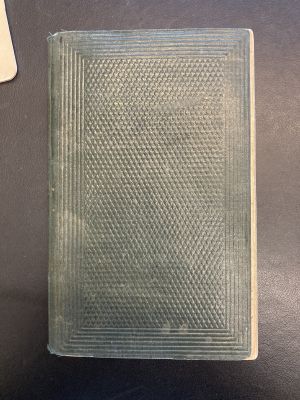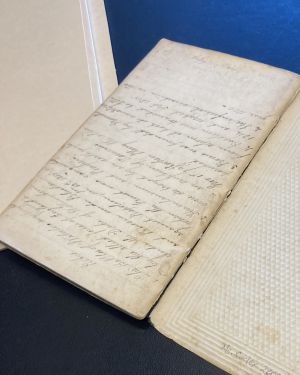Minnie Recipe Book

The Minnie Recipe Book is a manuscript cookbook written by Minnie, a woman from England, between the years 1872 and 1920.[1] As part of the receipt book genre that was popular during the early modern period, the book contains entries for various recipes, knitting patterns, remedies, and household tips. The manuscript also contains marginal notes and a few notes about historical events. The book provides insight into women’s authorship and the role of women in English society. In 2019, the manuscript was sold by Alastor Rare Books in England to the Kislak Center for Special Collections, Rare Books and Manuscripts at the University of Pennsylvania in Philadelphia, where it now resides.
Background
Historical context
The receipt book
Receipt books, also called manuscript cookbooks, were domestic manuals of recipes, remedies and household tips, typically written and used by women. Manuscript cookbooks began popping up in England in the mid-1600s, with some of the earliest being created in 1625. Around this time, the word “receipt” became the term for a set of ingredients, instructions, or procedures for the preparation of food or drink, [2] and these books became known as “receipt books.” Today, “recipe” has come to mean the same as “receipt,” and academics refer to the receipt book as manuscript cookbooks.[3]
Content

The Minnie recipe book was written in a small, faded dark green bound notebook. Minnie, the author of this manuscript cookbook, filled the pages with entries starting in 1872 and ending in 1920. The first 53 pages have been numbered by hand, and an unfinished index takes up the rest of the pages. There’s a variety of food recipes (such as ones for puddings, cakes, and baking soda), knitting patterns (for a baby hat, socks, and specific stitches and techniques), medicine (including one for a cough mixture), and other household tips (such as how to hold a piece of paper into a drinking cup or how to get rid of flies). Written upside down on the last page of the book are a series of four notes about historical events, such as the Battle of Waterloo.
There’s no sense of organization or categorization to the order of the entries; the first page reads “Receipts” at the top, and no other pages have specific headers. After that first heading, the first entry describes how to remove stains from your hands before immediately jumping into a recipe for soda cake. Similarly, the entries on the other pages follow no logical order. Each entry begins right after the other, with just one line skipped to separate them, regardless of the type of entry. For instance, pages 40-41 include the following entries back to back:

- For Gleaming Brass, Copper + Plate
- To cast off Knitted Socks
- Orphan Puppy Food
- Chocolate Slabs
Additionally, the index at the back of the book remains unfinished, only including a few entries.
Author(s)
No information is known about Minnie, aside from her being the main author of this manuscript, yet it’s likely that she was a servant in a wealthier household in England. Given the level of detail and the lack of organization of the Minnie recipe book, _________ There are at least two handwriting styles throughout the notebook, indicating that the manuscript was passed on to a second owner who continued compiling entries. The first set of entries, written by the earlier hand, use line separators in between each. The majority of the entries are written by the second hand and include attributions and dates for many of them. “To destroy Flies” on page 39, for example, includes a citation to a text called “Countryside” and dated “13•IX•12.”
Readership
Being a manuscript cookbook, it’s unlikely that this book would have been circulated or read by anyone outside of Minnie’s household or family.
Historical significance
Women's literacy and authorship
The majority of manuscript cookbooks were written by women
Some scholars believe that the majority of receipt books were written by female scribes for a fee, but that theory doesn’t seem to be the case for the Minnie recipe book as the book features multiple handwriting styles and contains an unfinished index.